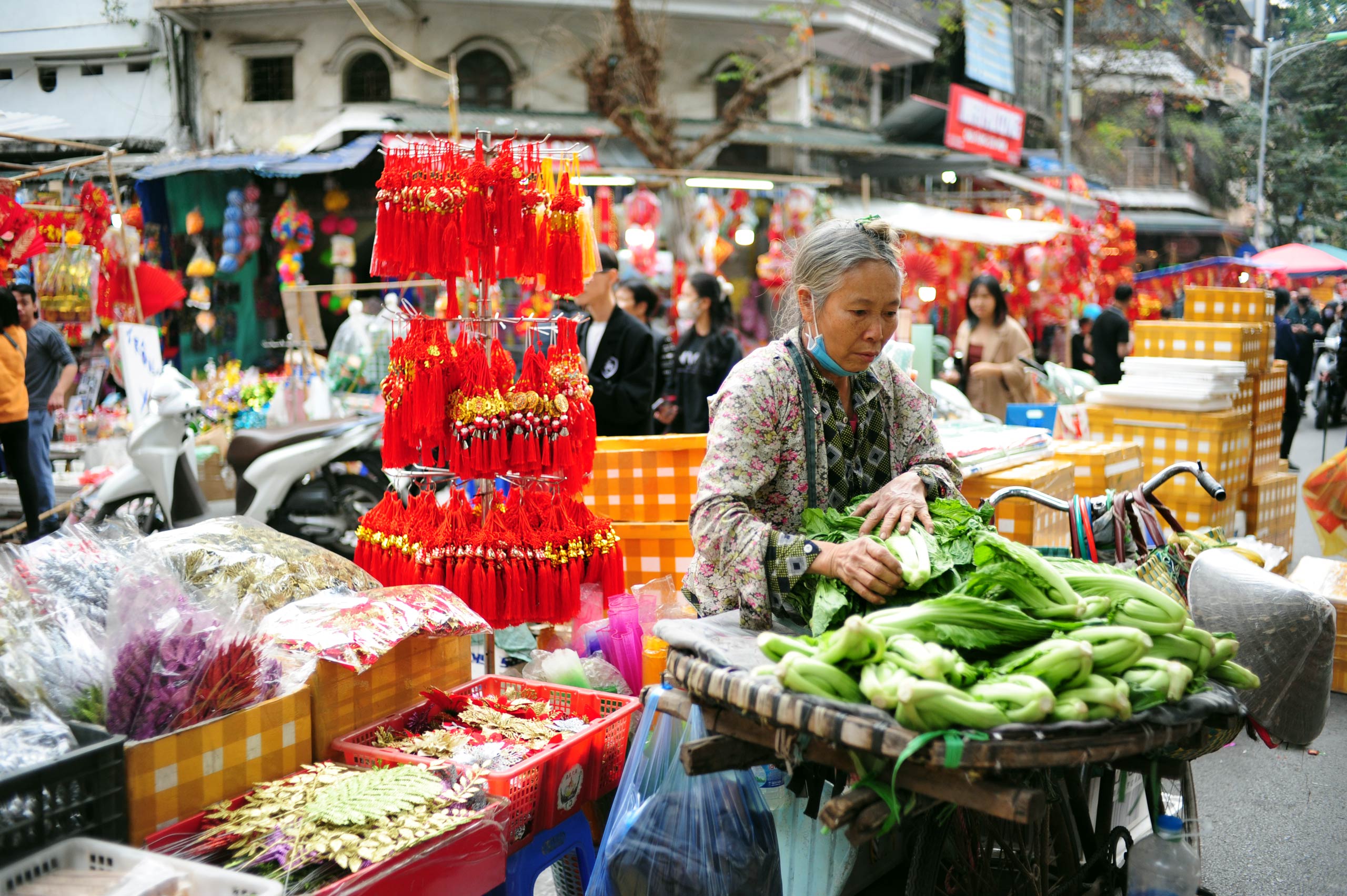
Hanoi, Vietnam's captivating capital, whispers tales of ancient dynasties and vibrates with the energy of a modern metropolis. Steeped in history, adorned with colonial elegance, and bursting with cultural treasures around every corner, Hanoi welcomes you to a symphony of experiences. From exploring labyrinthine Old Quarter alleys crammed with street food delights to contemplating the serene Temple of Literature Hanoi, Vietnam's first university, there's an endless tapestry of things to do in Hanoi waiting to be unraveled.
Whether you're seeking the echoes of the past in Ho Chi Minh's Mausoleum or embracing the buzz of trendy rooftop bars, Hanoi has something to enthrall every adventurer. So, ditch the guidebook and prepare to lose yourself in the charm of Hanoi – a tapestry woven with history, culture, and captivating experiences just waiting to be discovered.
Hanoi is the capital of Vietnam and one of the most attractive destinations of Vietnam. It is a city that has a history of more than 1,000 years, dating back to the time when it was the political and cultural center of several dynasties. Hanoi is also a city that has a vibrant and diverse culture, influenced by various sources such as China, France, and Japan. Hanoi is a city that has a charm that captivates visitors, with its ancient and modern architecture, its scenic lakes and parks, and its lively and colorful streets. Here are some of the reasons why you should visit Hanoi:
- Hanoi is a city that offers a variety of things to do and see, from historical and cultural attractions, such as the Ho Chi Minh Mausoleum, the Temple of Literature, and the Old Quarter, to natural and recreational attractions, such as the West Lake, the Hoan Kiem Lake, and the water puppet show.
- Hanoi is a city that has a delicious and diverse cuisine, with dishes that reflect the regional and seasonal specialties, such as pho, bun cha, cha ca, and banh mi. You can enjoy the street food culture, where you can find many stalls and vendors selling fresh and tasty food, or the fine dining culture, where you can experience the fusion and innovation of Vietnamese and international cuisines.
- Hanoi is a city that has a friendly and hospitable people, who are always willing to help and share their stories and traditions. You can interact with the locals and learn more about their culture and lifestyle, or join them in their festivals and celebrations, such as the Lunar New Year, the Mid-Autumn Festival, and the National Day.
- Hanoi is a city that has a convenient and affordable transportation, with options such as buses, taxis, motorbikes, and bicycles. You can easily explore the city and its surroundings, or travel to other destinations in Vietnam, such as Ha Long Bay, Sapa, or Ninh Binh.
Best things to do in Hanoi
Hanoi is a city full of history, culture, and charm, but it can also be a bit chaotic and confusing for first-time visitors. That's why we recommend joining a Walking Tour as one of the best things to do in Hanoi, so that you can get a sense of the city's layout and attractions, and choose which areas you want to explore further. Whether you want to see the historical landmarks, the vibrant markets, the tranquil lakes, or the lively nightlife, there's something for everyone in Hanoi. Remember to plan ahead and book your tickets and tours in advance, as Hanoi can get very busy and crowded during peak seasons.
Here are some of the best things to do in Hanoi in 2024, that you shouldn't miss.
Wander Around the Old Quarter
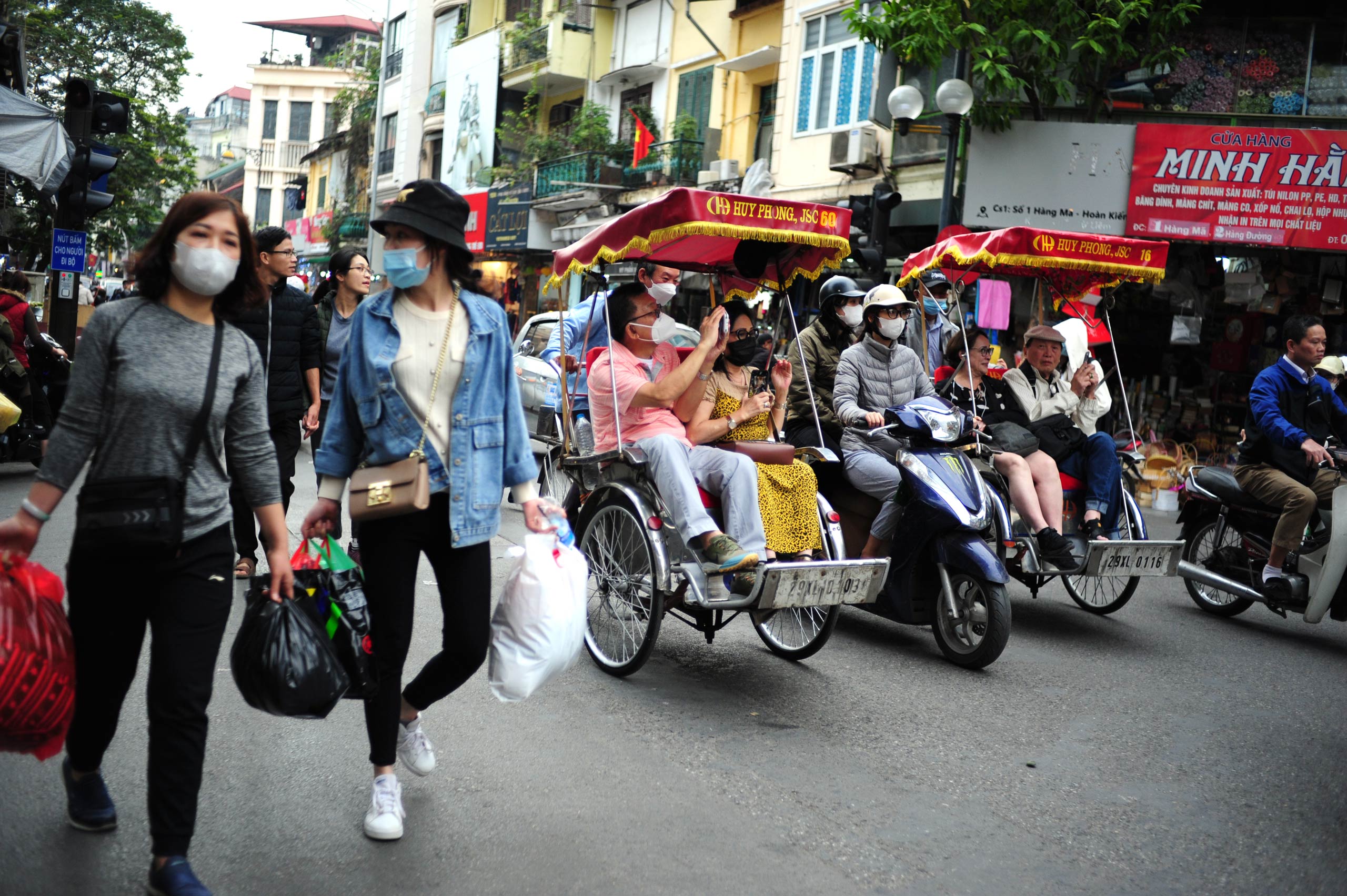
One of the best things to do in Hanoi is to wander around the Old Quarter, the heart and soul of the city. This is where you can experience the authentic and vibrant culture of Hanoi, as well as its rich and fascinating history. The Old Quarter is a maze of narrow streets, each named after the craft or product that was once sold there. You can find everything from silk, silver, and spices, to pottery, paper, and paintings. The Old Quarter is also home to many ancient temples, pagodas, and houses, some dating back to the 15th century. You can admire the architecture and learn about the stories and legends behind these buildings.
As you visit Old Quarter Hanoi on foot, you will also discover the amazing street food scene of Hanoi. The Old Quarter is a foodie's paradise, where you can sample the delicious and diverse cuisine of the city. You can try the famous pho, a noodle soup with beef or chicken, the bun cha, grilled pork with rice noodles and herbs, the cha ca, fried fish with turmeric and dill, and the banh mi, a baguette sandwich with various fillings. You can also enjoy the local drinks, such as the egg coffee, a creamy and sweet concoction, the bia hoi, a fresh and cheap draft beer, and the tra da, a refreshing iced tea.
The Old Quarter is also a great place to enjoy the nightlife and entertainment of Hanoi. You can find many bars, pubs, clubs, and live music venues, where you can mingle with the locals and other travelers. You can also watch the traditional water puppet show, a unique and colorful art form that originated in the rural areas of Vietnam. The show features wooden puppets that perform on a water stage, accompanied by folk music and stories. You can catch a show at the Thang Long Water Puppet Theatre, one of the most popular and oldest in Hanoi.
Explore the Hanoi Old Quarter is a must-do activity for anyone who wants to explore the culture and history of Hanoi. You will never get bored or run out of things to see and do in this lively and charming area.
Hanoi Food Tour & Cooking Class
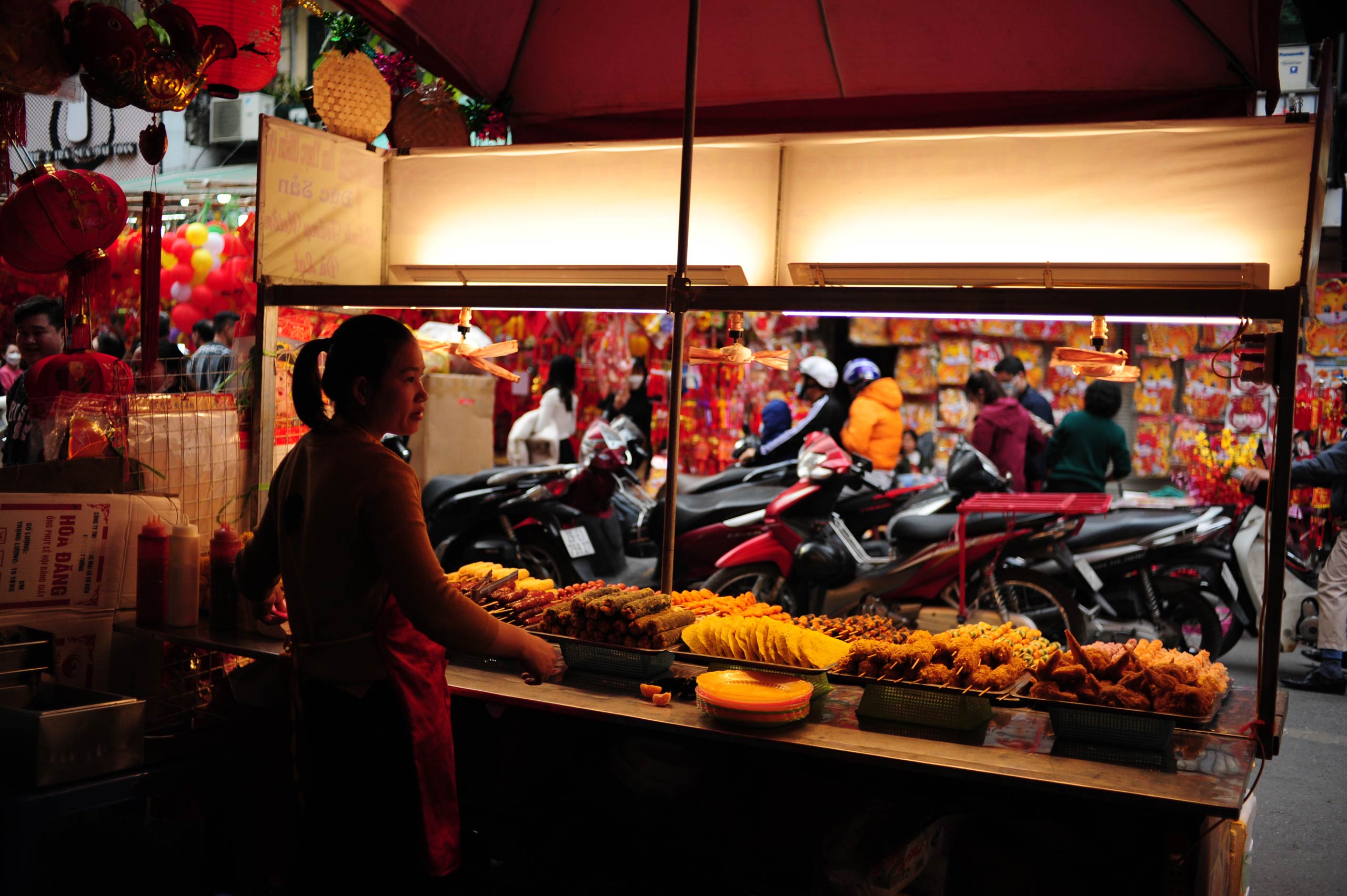
If you are a food lover and want to experience the authentic and diverse cuisine of Hanoi, then you should not miss the opportunity to join a food tour and cooking class in the city. This is one of the best things to do in Hanoi, as you will not only taste the delicious dishes, but also learn how to prepare and cook them yourself. Here is what you can expect from this amazing activity:
- A food tour is a guided walk through the streets and markets of Hanoi, where you will discover the local ingredients, flavors, and specialties of the city. You will sample various street food, such as pho (noodle soup), bun cha (grilled pork with rice noodles), banh mi (baguette sandwich), and egg coffee (coffee with egg yolk and condensed milk). You will also learn about the history and culture behind each dish, and how they reflect the regional and seasonal characteristics of Hanoi.
- A cooking class is a hands-on lesson in a typical restaurant or home kitchen in Hanoi, where you will learn how to make some of the most popular and traditional dishes of the city. You will follow the instructions of a professional chef, who will teach you the techniques and tips to create delicious and healthy Vietnamese food. You will also learn about the herbs, spices, and sauces that are essential for Vietnamese cuisine. Some of the dishes that you may learn to cook are banh xeo (crispy rice pancake), nem (spring rolls), cha ca (fried fish with turmeric and dill), and che (sweet soup).
Hungry for an insider's perspective on the city's sizzling street food and secret spice blends? Our travel experts at Travel Vietnam are just a click away!
Skip the generic search results and let us tailor a Hanoi food tour & cooking class that ignites your taste buds and sparks your creativity. We'll whisk you through vibrant markets, decipher the language of chilies and lemongrass, and guide you in mastering local specialties like pho and banh mi.
Ready to swap a guidebook for a rolling pin? Head over to customize tour page or Contact us and let us whip up an unforgettable culinary adventure – just for you. From market mayhem to kitchen mastery, your Hanoi food journey awaits!
Visit the Ho Chi Minh Mausoleum
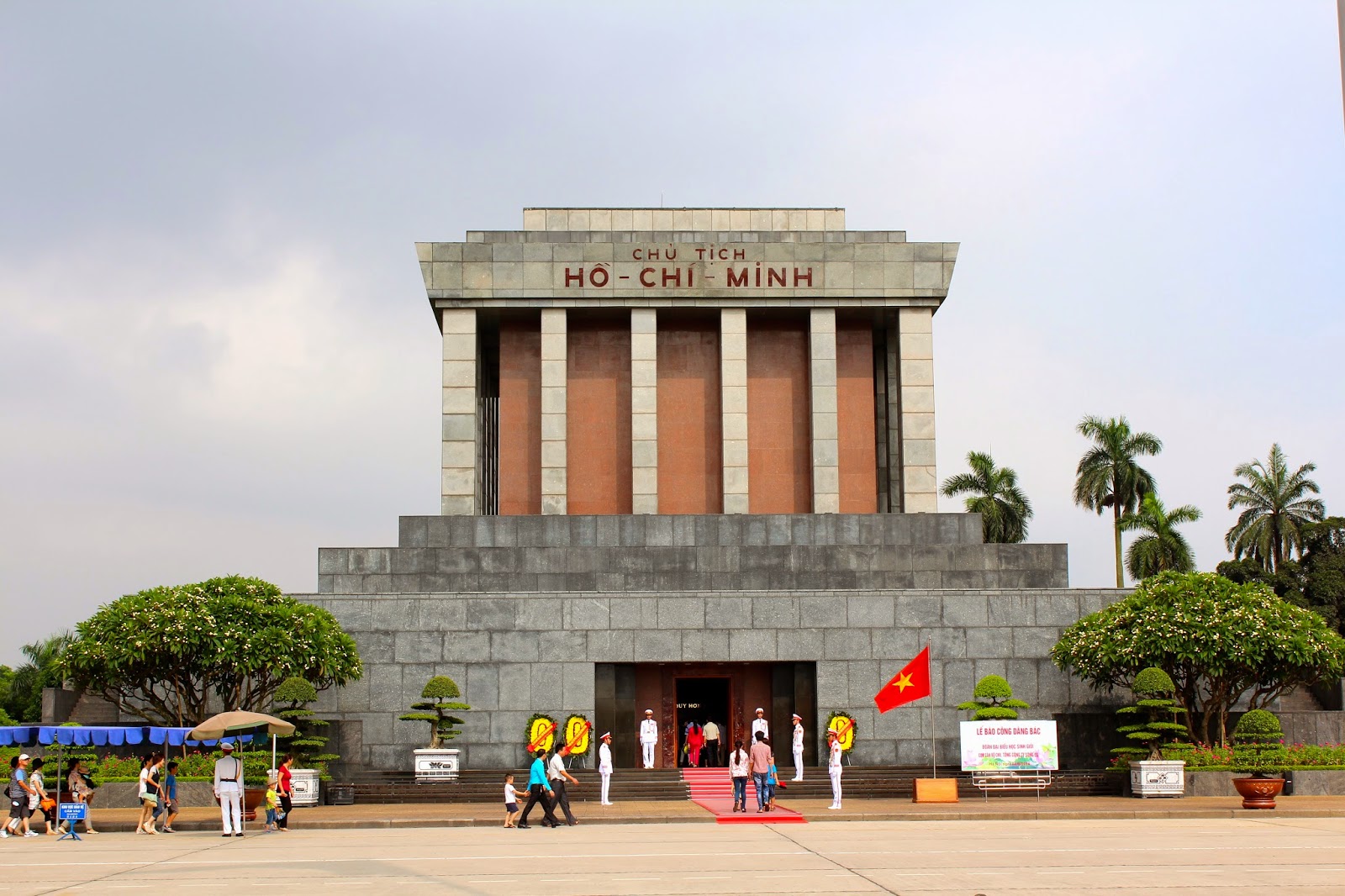
Towering over Ba Dinh Square, the Ho Chi Minh Mausoleum isn't just a monument – it's a window into the soul of Vietnam. More than a simple resting place for the country's revered leader, it's a tapestry woven with reverence, revolution, and the echoes of a nation's past. Stepping inside is a like taking a time machine, where history whispers from the polished marble floors and sunlight paints the air with a solemn stillness.
But before you even reach the imposing granite facade, prepare to be swept away by the grandeur of Ba Dinh Square itself. Imagine stepping onto a vast emerald carpet, meticulously groomed with the reverence reserved for hallowed ground. Sunbathers lounge on the grass, families picnic under the shade of sprawling banyan trees, and children chase pigeons across the expansive plaza. It's a microcosm of Hanoi, where history hums beneath the surface of everyday life.
As you approach the mausoleum, silence descends, broken only by the rhythmic click of soldiers' boots. Guard posts flank the entrance, their stoic presence a testament to the enduring respect for Ho Chi Minh. Inside, the air is cool, a hushed contrast to the vibrant chaos outside. Sunlight filters through stained-glass windows, casting a mosaic of colored light onto the polished marble floor.
Here, in the heart of the mausoleum, lies the body of Ho Chi Minh, preserved in a glass sarcophagus. The atmosphere is charged with reverence, visitors shuffling past in slow, silent procession. There's no pomp or ceremony, just a quiet respect that speaks volumes about the impact Ho Chi Minh had on Vietnam's trajectory.
But this isn't just about gazing at a preserved figure. As you walk through the adjoining museum, the story of Ho Chi Minh unfolds before you. Photographs trace his journey from a young revolutionary to a beloved leader, each image a poignant glimpse into a life dedicated to Vietnam's independence. You'll see him leading guerilla campaigns in the jungle, negotiating with world leaders, and sharing simple meals with farmers in the countryside.
Leaving the mausoleum, you step back into the vibrant pulse of Hanoi, forever changed by the experience. It's not just a visit to a historical landmark; it's a chance to understand the heartbeat of a nation, the unwavering spirit that propelled Vietnam through centuries of struggle and ultimately, towards its hard-won freedom. You'll carry that understanding with you as you navigate the bustling streets, sip sweet ca phe sua at a sidewalk cafe, and lose yourself in the charm of this captivating city.
Beyond the Mausoleum:
Changing of the Guard: Witness the changing of the guard ceremony every hour, a display of precision and discipline that adds to the solemn atmosphere.
One Pillar Pagoda: Step across the lotus pond to this unique temple, perched on a single wooden pillar, a symbol of resilience and spiritual purity.
Vietnam Military History Museum: Immerse yourself in Vietnam's war history through exhibits showcasing weapons, military vehicles, and personal stories of sacrifice.
Remember, photography is not allowed inside the mausoleum itself, but feel free to capture the grandeur of Ba Dinh Square and the surrounding sights.
So, if you're seeking more than just tourist snapshots in Hanoi, consider a visit to the Ho Chi Minh Mausoleum. It's a journey into the heart of Vietnam, a chance to witness the enduring legacy of a revered leader, and to walk away with a deeper understanding of this captivating nation.
Hoan Kiem Lake
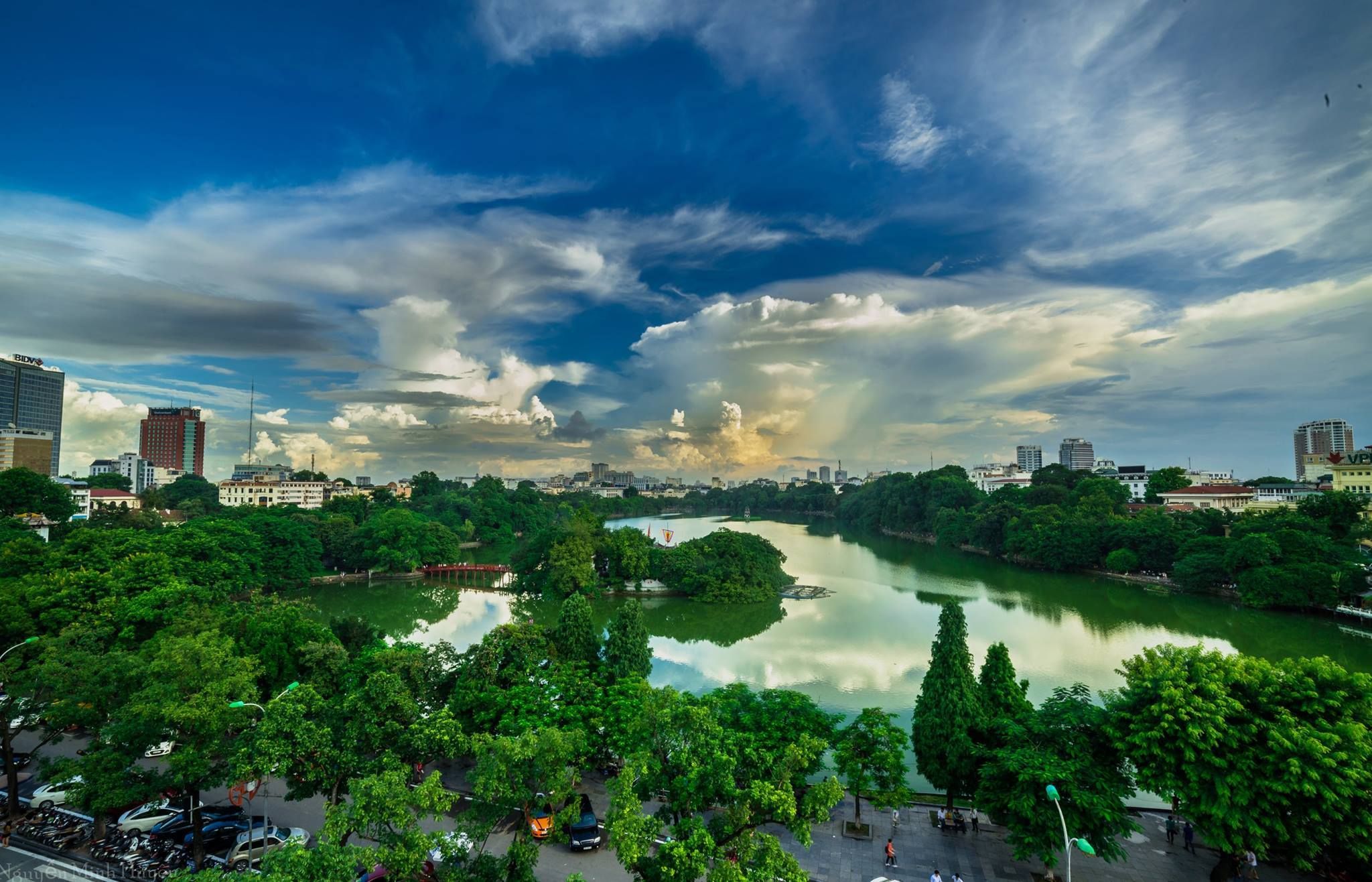
If you're looking for a place to relax, enjoy the scenery, and learn about the culture and history of Hanoi, you can't miss Hoan Kiem Lake. This lake, whose name means "Lake of the Returned Sword" or "Lake of the Restored Sword", is one of the most iconic landmarks of the city. It's located in the heart of the Old Quarter, surrounded by busy streets, shops, cafes, and temples. But once you step into the lake area, you'll feel a sense of tranquility and peace.
Sword Lake, also known as Hoan Kiem Lake, is a natural freshwater lake in the heart of Hanoi city. It covers an area of about 12 hectares and connects the old streets of Hang Ngang, Hang Dao, Cau Go, Luong Van Can, Lo Su, and others with the Western neighborhoods that were planned by the French colonialists over a hundred years ago, such as Bao Khanh, Nha Tho, Trang Thi, Hang Bai, Dinh Tien Hoang, and Trang Tien.
Hoan Kiem Lake has a rich and fascinating legend that dates back to the 15th century, as it is linked to the legend of King Le Loi, who returned a precious sword to a magical turtle that emerged from the lake. According to the story, Emperor Le Loi was given a magical sword by the Dragon King to fight against the invading Ming army. After he defeated the enemy, he was boating on the lake when a giant turtle emerged from the water and asked for the sword back. The emperor realized that the sword belonged to the Dragon King and returned it to the turtle. He then renamed the lake to commemorate this event. The name Hoan Kiem means "Lake of the Returned Sword" in Vietnamese. The lake also has other names, such as Luc Thuy (Green Water), Thuy Quan (Water Army), Ta Vong (Left Bank), and Huu Vong (Right Bank), reflecting its different aspects and functions over time.
You can still see the traces of this legend around the lake today. On a small island in the center of the lake, there is a tower called Turtle Tower, which is a symbol of the lake and the city. On another island, connected by a red wooden bridge, there is a temple called Ngoc Son Temple, which means Temple of the Jade Mountain. This temple honors the hero of the legend, Emperor Le Loi, as well as other famous figures in Vietnamese history and literature.
Hoan Kiem Lake is not only a place of historical and cultural significance, but also a place of beauty and recreation. The lake has a circumference of about 1.75 km, which makes it a perfect spot for walking, jogging, cycling, or just sitting and watching the world go by. The lake changes its color depending on the time of the day and the season, from green to blue to gray. You can also see many kinds of flowers, trees, and birds around the lake, adding to its natural charm.
One of the best things to do at Hoan Kiem Lake is to join the locals in their morning or evening activities. You'll see people of all ages practicing tai chi, yoga, aerobics, dancing, or playing chess by the lake. You can also enjoy some street performances, such as water puppet shows, music, or magic tricks. If you're feeling hungry or thirsty, you can find many vendors selling snacks, drinks, souvenirs, or even books by the lake.
Hoan Kiem Lake is a must-see attraction for anyone visiting Hanoi. It's a place where you can experience the history, culture, and lifestyle of the city in a serene and scenic setting. It's also a place where you can meet and interact with the friendly and hospitable people of Hanoi. Don't miss the chance to visit this lake and discover its wonders for yourself.
Ngoc Son Temple
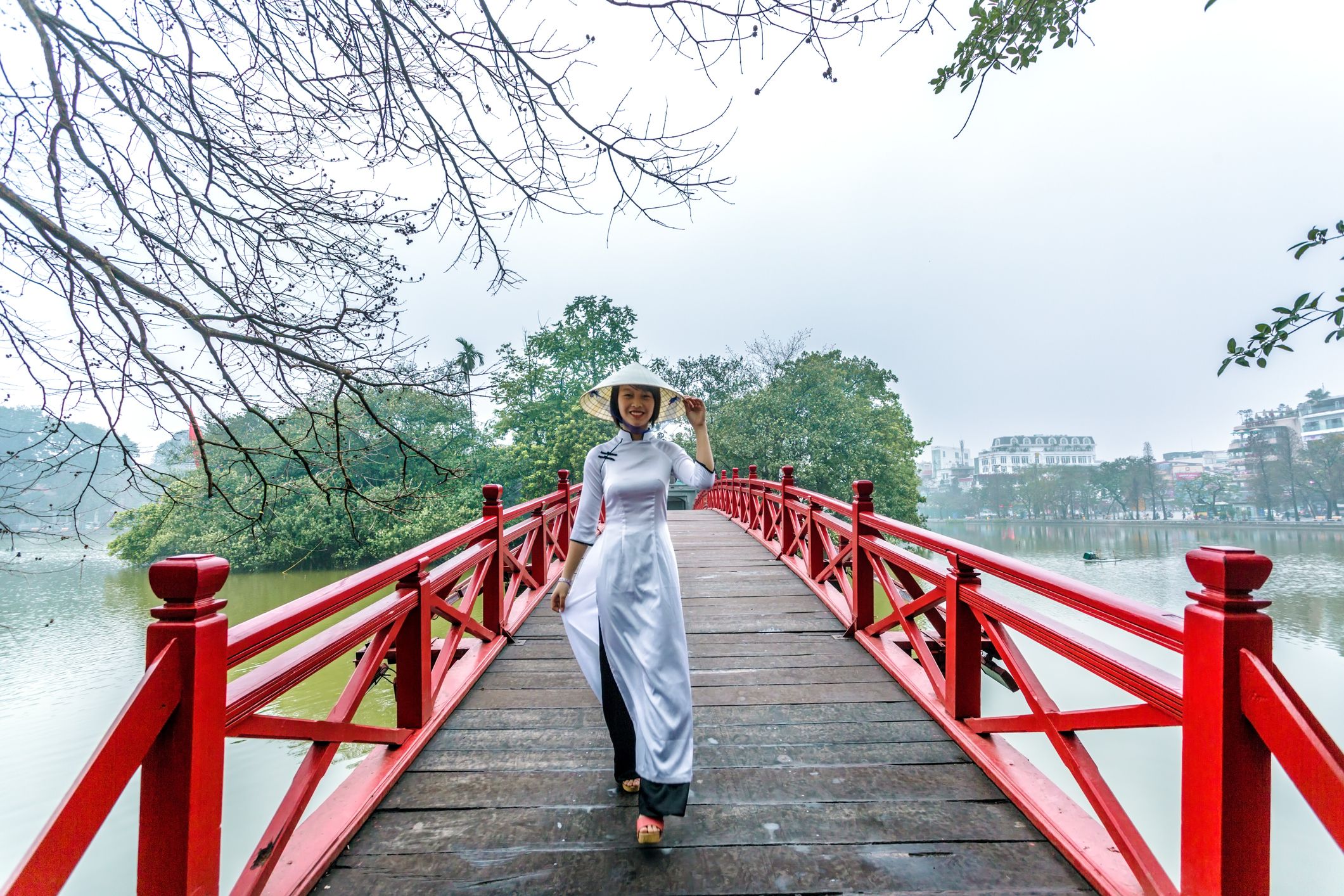
Nestled serenely on an islet in the heart of Hoan Kiem Lake, Ngoc Son Temple stands as a timeless gem, beckoning travelers to uncover the rich tapestry of Hanoi's history. This centuries-old temple, dating back to the 19th century, is a captivating testament to Vietnam's cultural heritage and spiritual resilience.
As you set foot on the graceful red bridge leading to Ngoc Son Temple, you'll feel like you've stepped into a portal that transcends time. The temple's name, "Ngoc Son," translates to "Jade Mountain," and the aura surrounding it indeed exudes a sense of ethereal tranquility.
Inside the temple grounds, history comes alive through the intricate architecture and sacred artifacts. The main altar houses a striking statue of the revered scholar Van Xuong, flanked by towering pillars adorned with delicate inscriptions. It's like a symphony of craftsmanship, with every element harmonizing to create a sanctuary that breathes reverence.
But it's not just about the architecture – Ngoc Son Temple is a living testament to legends. The tale of the giant turtle, known as Kim Qui, adds a touch of mystique to the temple's allure. According to legend, while King Le Thai To was once out on a boat, suddenly a golden turtle emerged from the water demanding the king return the sword that the Dragon King lent him to expel the invading Ming army. The king immediately returned the sword to the magic turtle and the turtle dived into the water and disappeared.. The giant turtle's shrine within the temple serves as a captivating reminder of this enchanting folklore.
Beyond the spiritual ambiance, Ngoc Son Temple provides a captivating panorama of Hoan Kiem Lake. The vantage point from the temple's courtyard offers a picturesque view of the surrounding cityscape, making it an ideal spot for contemplation and photography.
For those seeking a deeper connection with Hanoi's pulse, a visit to Ngoc Son Temple is a must. Whether you're a history enthusiast, a culture connoisseur, or just a curious traveler, this site weaves together the threads of the city's past, present, and future.
In your exploration of interesting things to do in Hanoi, make Ngoc Son Temple a priority. Let the whispers of the past guide you as you traverse the The Huc Bridge, and as you stand on the venerable bridge, feel the heartbeat of a city that has withstood the test of time. Ngoc Son Temple isn't just a destination; it's a journey into the soul of Hanoi, where every stone tells a story, and every breeze carries the echoes of a bygone era.
Shop at Dong Xuan Market
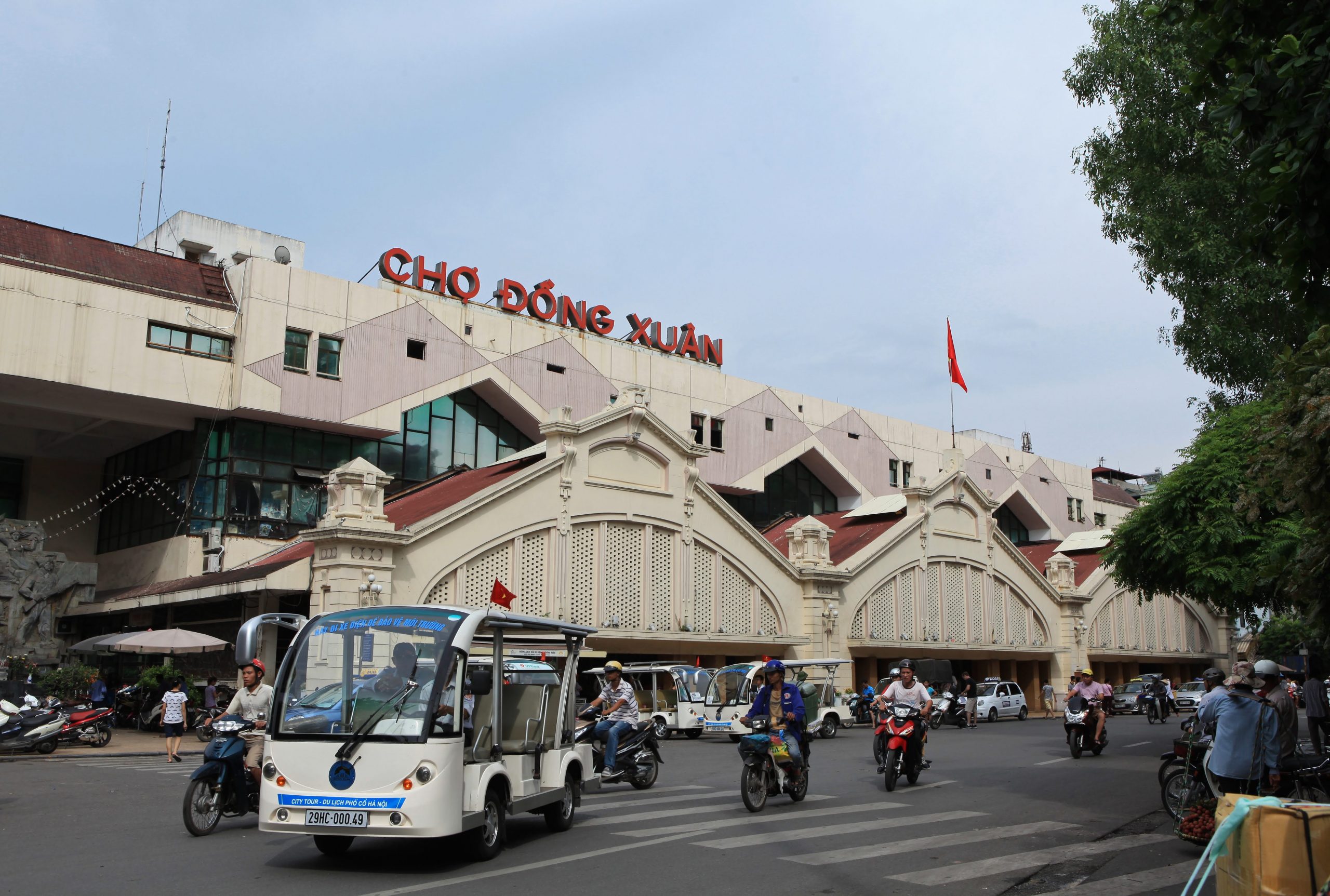
If you're looking for a place to experience the local culture, bargain for some souvenirs, and taste some delicious street food, then you can't miss Dong Xuan Market. It's one of the oldest and largest markets in Hanoi, and it's open every day from 7 AM to 5 PM.
Dong Xuan Market is located in the Old Quarter, near the Hoan Kiem Lake and the Long Bien Bridge. It was built in 1889 by the French colonialists, and it has survived several fires and renovations over the years. The market covers an area of about 6,500 square meters, and it has 3 floors with hundreds of stalls selling everything from clothes, accessories, electronics, household goods, fabrics, handicrafts and flowers.
You can find some of the best deals and bargains at Dong Xuan Market, as long as you're willing to haggle and compare prices. Don't be afraid to walk away if you're not satisfied with the offer, as there are plenty of other vendors to choose from. You can also ask for a discount if you buy in bulk or pay in cash. Some of the most popular items to buy at Dong Xuan Market are silk, embroidery, lacquerware, ceramics, bamboo products, and ethnic minority costumes.
But shopping is not the only thing to do at Dong Xuan Market. You can also enjoy the lively atmosphere, the colorful displays, and the friendly interactions with the locals. You can also learn about the history and culture of Hanoi, as the market is a witness to many important events and changes in the city.
And of course, you can't leave Dong Xuan Market without trying some of the mouthwatering street food that is available in and around the market. You can find a variety of dishes, such as pho, bun cha, banh mi, banh cuon, cha ca, nem ran, and many more. You can also sample some of the exotic fruits, such as dragon fruit, rambutan, lychee, and durian. You can also quench your thirst with some fresh coconut water, sugar cane juice, or iced coffee.
Dong Xuan Market is a must-see destination for anyone who wants to explore the authentic and vibrant side of Hanoi. It's a place where you can shop, eat, and learn, all in one. It's a place where you can immerse yourself in the local culture, and have a memorable and fun experience. So don't miss the chance to visit Dong Xuan Market when you're in Hanoi. You won't regret it.
St. Joseph's Cathedral
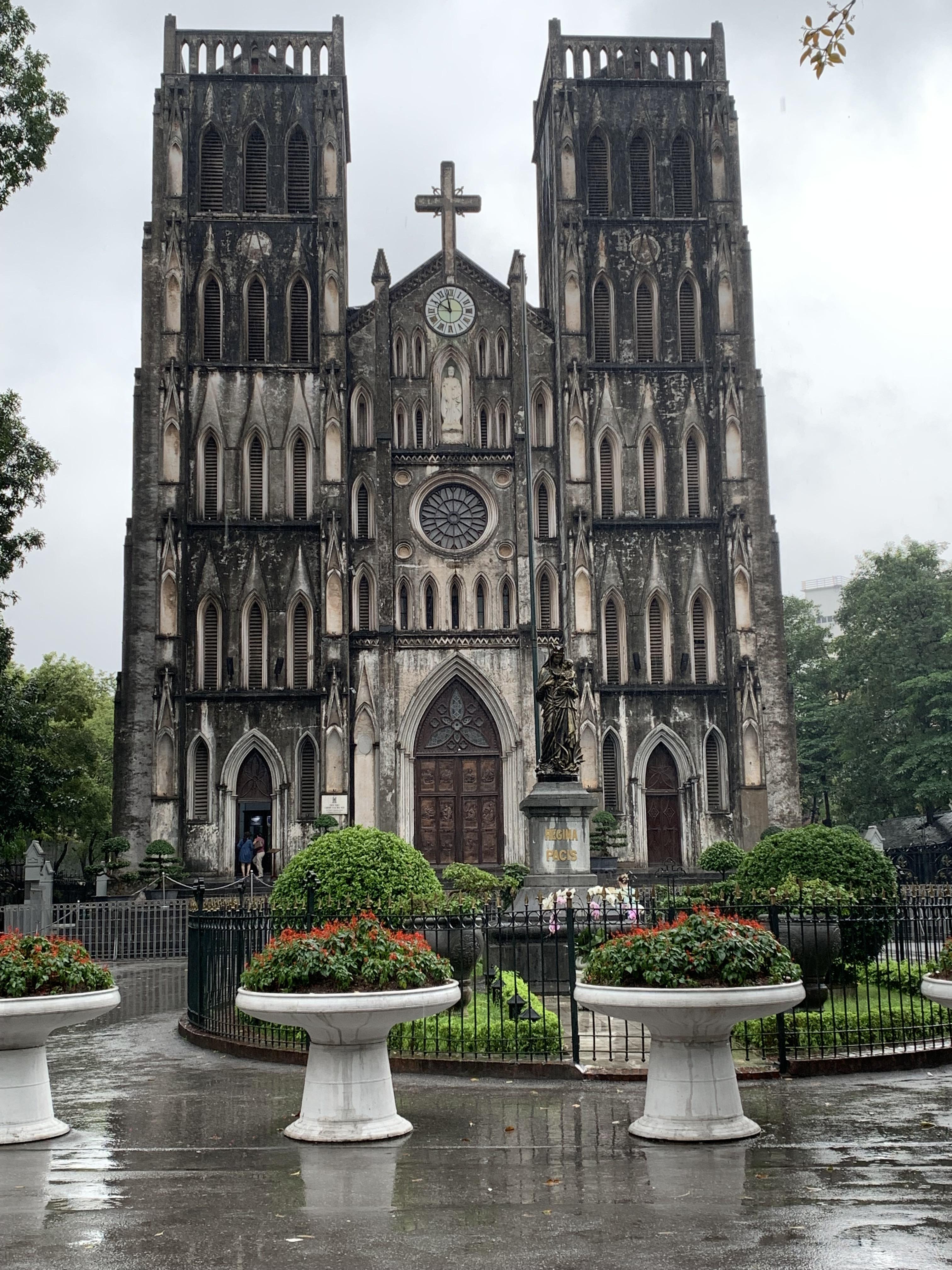
If you are looking for a place to admire the beauty of Gothic architecture, experience the tranquility of prayer, and learn about the history of Catholicism in Vietnam, then you should not miss visiting Hanoi St. Joseph's Cathedral. This is the oldest church in Hanoi and one of the most impressive landmarks in the city.
The cathedral was built by the French colonial government in the late 19th century, on the site of the former Bao Thien Pagoda, which was the center of Buddhism in Vietnam during the Ly and Tran dynasties. The construction of the cathedral started in 1884 and was completed in 1886, with a design that resembles the Notre Dame de Paris. The cathedral was named after St. Joseph, the patron saint of Vietnam, and became the headquarters of the Roman Catholic Archdiocese of Hanoi.
During the French colonial period, the cathedral was the place where Catholicism was propagated and practiced by thousands of believers in the north of Vietnam. It was also a place where Vietnamese revolutionaries hid and received support from the priests and the faithful. After the French left Vietnam in 1954, the cathedral was closed and controlled by the communist government, until it was reopened in 1990. Since then, the cathedral has been restored and renovated several times, and has become a popular destination for tourists and locals alike.
The cathedral is a stunning example of Gothic Revival architecture, with a soaring facade that faces a small square. The cathedral has two towers, each with a height of 31.5 meters and a spire with a cross. The main entrance has three arches and a rose window, and is decorated with statues of saints and angels. The cathedral also has a statue of Mother Mary in front of it, which is a gift from the Catholics in France.
The interior of the cathedral is equally impressive, with a high vaulted ceiling, stained glass windows, and a large altar. The cathedral has a nave and two aisles, with a total length of 64.5 meters and a width of 20.5 meters. The cathedral can accommodate up to 3,000 people at a time. The cathedral also has a choir and an organ, which are used for the Mass and other ceremonies. The cathedral has a rich collection of religious artifacts, such as paintings, statues, and relics.
The cathedral is not only a place of worship, but also a place of culture and community. The cathedral conducts Mass several times a day, in both Vietnamese and English, and welcomes people of all faiths and backgrounds. The cathedral also organizes various events and activities, such as concerts, exhibitions, festivals, and charity programs. The cathedral is especially crowded and lively during Christmas, Easter, and other special occasions.
One of the most unique features of the cathedral is the bell ringing, which happens every day at 5:00 am and 9:00 pm. The bell ringing is a tradition that dates back to the colonial era, when it was used to announce the curfew. Today, the bell ringing is a way of reminding people of the presence of God and the beauty of life. The sound of the bell can be heard throughout the Old Quarter, creating a peaceful and nostalgic atmosphere.
The cathedral is located on Nha Chung Street, in the Hoan Kiem District of Hanoi. It is within walking distance from Hoan Kiem Lake, the heart of the city. The cathedral is surrounded by many shops, cafes, restaurants, and hotels, making it a convenient and attractive place to visit.
To get to the cathedral, you can take a taxi, a bus, a motorbike, or a cyclo. The cathedral is open to the public every day, from 8:00 am to 5:00 pm. However, the main gates are only opened during the Mass, and the rest of the time, you have to enter through a side door. The entrance fee is free, but you are expected to dress modestly and respectfully. You can also join a guided tour or a free walking tour, which will give you more information and insights about the cathedral and its history.
Hanoi St. Joseph's Cathedral is a must-see attraction for anyone who visits Hanoi. It is a place where you can admire the magnificent architecture, experience the spiritual atmosphere, and learn about the history of Catholicism in Vietnam. It is also a place where you can enjoy the culture and the community of Hanoi, and feel the charm and the soul of the city. Hanoi St. Joseph's Cathedral is a place that will leave you with unforgettable memories and impressions.
Visit the Temple of Literature
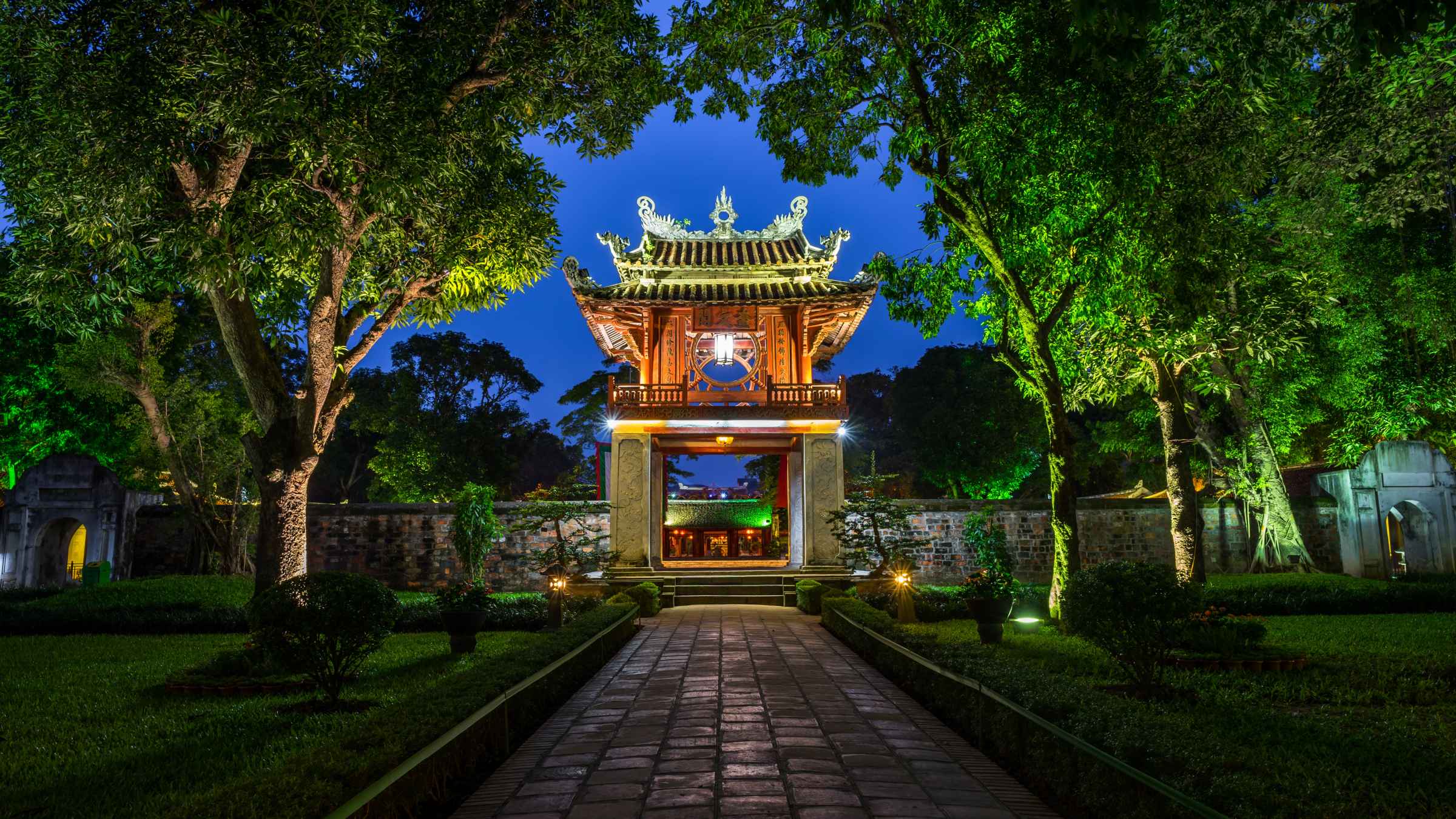
If you're a fan of history, culture, and architecture, you can't miss visiting the Temple of Literature in Hanoi. This is one of the oldest and most beautiful landmarks in the city, and it was the first national university of Vietnam. It's a great place to learn about the Confucian tradition, the education system, and the achievements of Vietnamese scholars over the centuries.
The Temple of Literature, or Van Mieu in Vietnamese, is a complex of buildings and gardens that was built in 1070 by Emperor Ly Thanh Tong. It was dedicated to Confucius, the famous Chinese philosopher and teacher, and his four main disciples. The temple also housed the Imperial Academy, or Quoc Tu Giam, which was established in 1076 as the highest educational institution of the country. The academy was open to the sons of the nobility and the elite, who had to pass rigorous exams to enter and graduate. The temple and the academy were the symbols of the cultural and intellectual development of Vietnam under the Ly and Tran dynasties.
The Temple of Literature is divided into five courtyards, each with its own gate, pavilion, hall, or pond. The first courtyard is a large open space with ancient trees and a path leading to the main gate, called the Great Middle Gate. The second courtyard has a square pond called the Well of Heavenly Clarity, surrounded by four smaller gates. The third courtyard has a large pavilion called the Pavilion of Constellation, where the scholars used to recite their poems and essays. The fourth courtyard is the most important one, as it contains the House of Ceremonies, where the worship of Confucius and his disciples took place, and the Imperial Academy, where the students studied and lived. The most impressive feature of this courtyard is the 82 stone stelae, which are placed on the backs of stone turtles. These stelae record the names and achievements of the graduates of the academy from 1442 to 1779. They are considered as the "stone steles of doctoral laureates" and are recognized by UNESCO as a Memory of the World.
The fifth courtyard is the newest one, as it was added in 1802 by Emperor Gia Long of the Nguyen dynasty. It has a large hall called the Quoc Tu Giam Hall, which displays the statues of Confucius and his disciples, as well as some artifacts and documents related to the history of the temple and the academy. There is also a small museum that exhibits the costumes, instruments, and tools that were used by the scholars and the teachers.
The Temple of Literature is not only a historical and cultural site, but also a place of inspiration and beauty. You can admire the elegant and harmonious architecture, the serene and peaceful atmosphere, and the rich and diverse vegetation. You can also learn about the values and principles of Confucianism, which influenced the moral and ethical codes of Vietnamese society for centuries. You can also appreciate the achievements and contributions of the Vietnamese scholars, who were the pioneers and leaders of the nation's development. The Temple of Literature is a place where you can feel the spirit and the soul of Hanoi, and connect with its past and present.
Visit Tran Quoc Pagoda
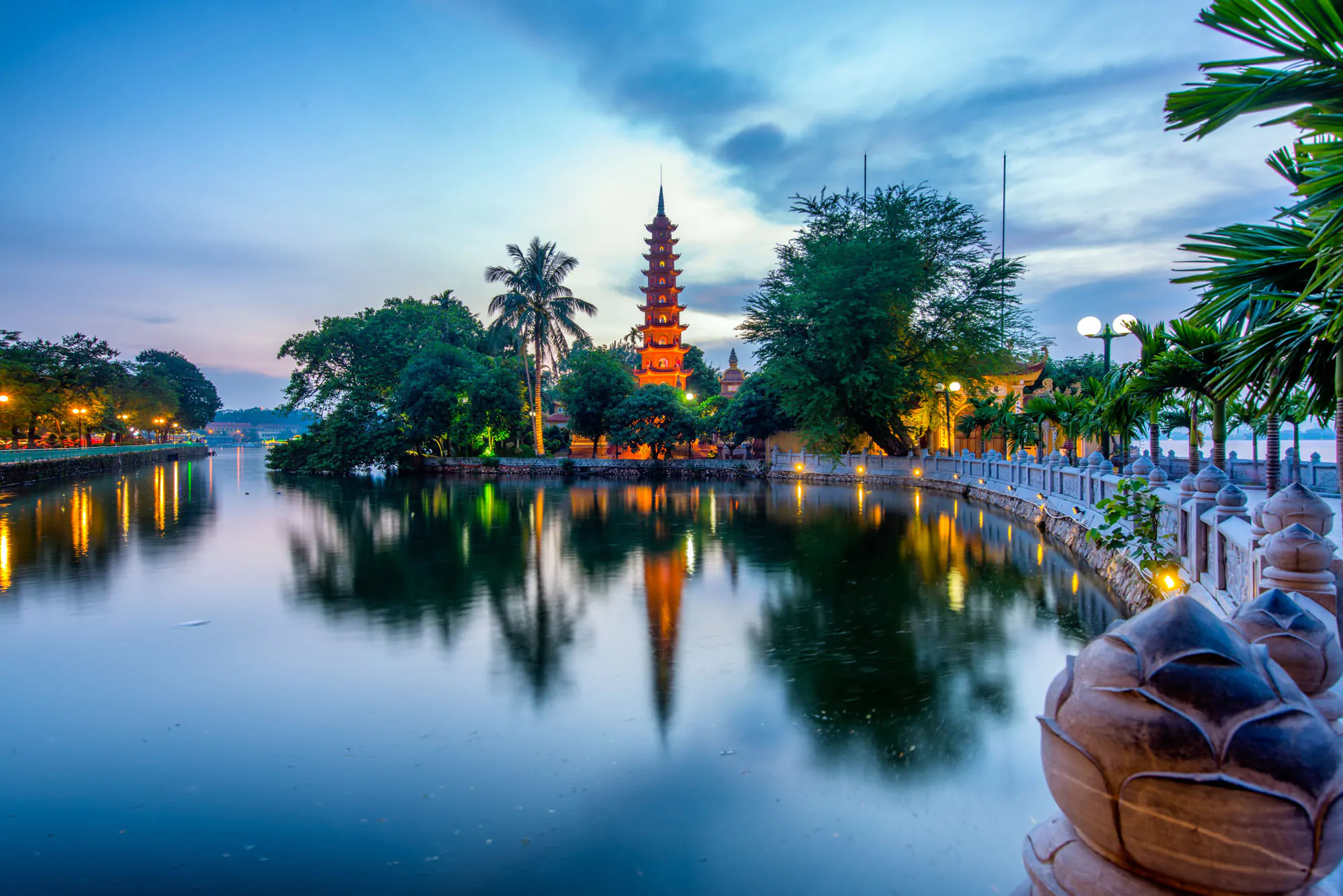
For those who love temples, Buddhism and history, Tran Quoc Pagoda is an ideal place to visit when visiting Hanoi. This is the oldest Buddhist temple in the city and in VietnamThis stunning pagoda is located on a small island in the West Lake, and it offers a glimpse into the history, culture, and spirituality of Vietnam.
Tran Quoc Pagoda was built in 541, during the reign of Emperor Ly Nam De, who named it Khai Quoc, meaning National Founder. The pagoda was originally situated on the banks of the Red River, but it was moved to its current location in 1615, after the river bank collapsed. The pagoda was then renamed Tran Quoc, meaning National Defence, to reflect its role as a guardian of the north.
Tran Quoc Pagoda is a masterpiece of architecture, with a harmonious combination of buildings and gardens. The pagoda has five courtyards, each with its own gate, hall, pond, or pavilion. The most notable features of the pagoda are the 11-storey tower, which houses a statue of Amitabha Buddha and a collection of relics; and the Bodhi tree, which was a gift from the Indian president in 1969, as a symbol of the connection between the two countries.
Tran Quoc Pagoda is also a place of worship and learning, where you can experience the values and teachings of Buddhism. The pagoda conducts daily prayers and ceremonies, and welcomes visitors of all faiths and backgrounds. The pagoda also hosts various events and activities, such as festivals, concerts, exhibitions, and charity programs. The pagoda is especially crowded and lively during special occasions, such as the Buddha's birthday, the full moon day, and the Lunar New Year.
Tran Quoc Pagoda is located on Thanh Nien Road, in the Tay Ho District of Hanoi. It is easily accessible by taxi, bus, motorbike, or cyclo. The pagoda is open to the public every day, from 8 am to 4 pm. However, the main gate is only opened during the prayer times, and the rest of the time, you have to enter through a side door. The entrance fee is free, but you are expected to dress modestly and respectfully. Please don't wear shorts, dresses or skirts, or tops with low-neck lines and bare shoulders. To do this is considered extremely rude and offensive. You can also join a guided tour or a free walking tour, which will give you more information and insights about the pagoda and its history.
In 2016, the Daily Mail newspaper in the UK ranked Tran Quoc Pagoda among the 16 most beautiful pagodas in the world. In 2017, travel website wanderlust.co.uk ranked Tran Quoc Pagoda third in the 10 "most beautiful pagodas in the world" because of its harmony with the surrounding environment.
Tran Quoc Pagoda is a must-see attraction for anyone who visits Hanoi. It is a place where you can admire the beauty and the history of the pagoda, experience the tranquility and the wisdom of Buddhism, and enjoy the culture and the community of Hanoi. Tran Quoc Pagoda is a place that will leave you with unforgettable memories and impressions.
Hanoi Free Walking Tours
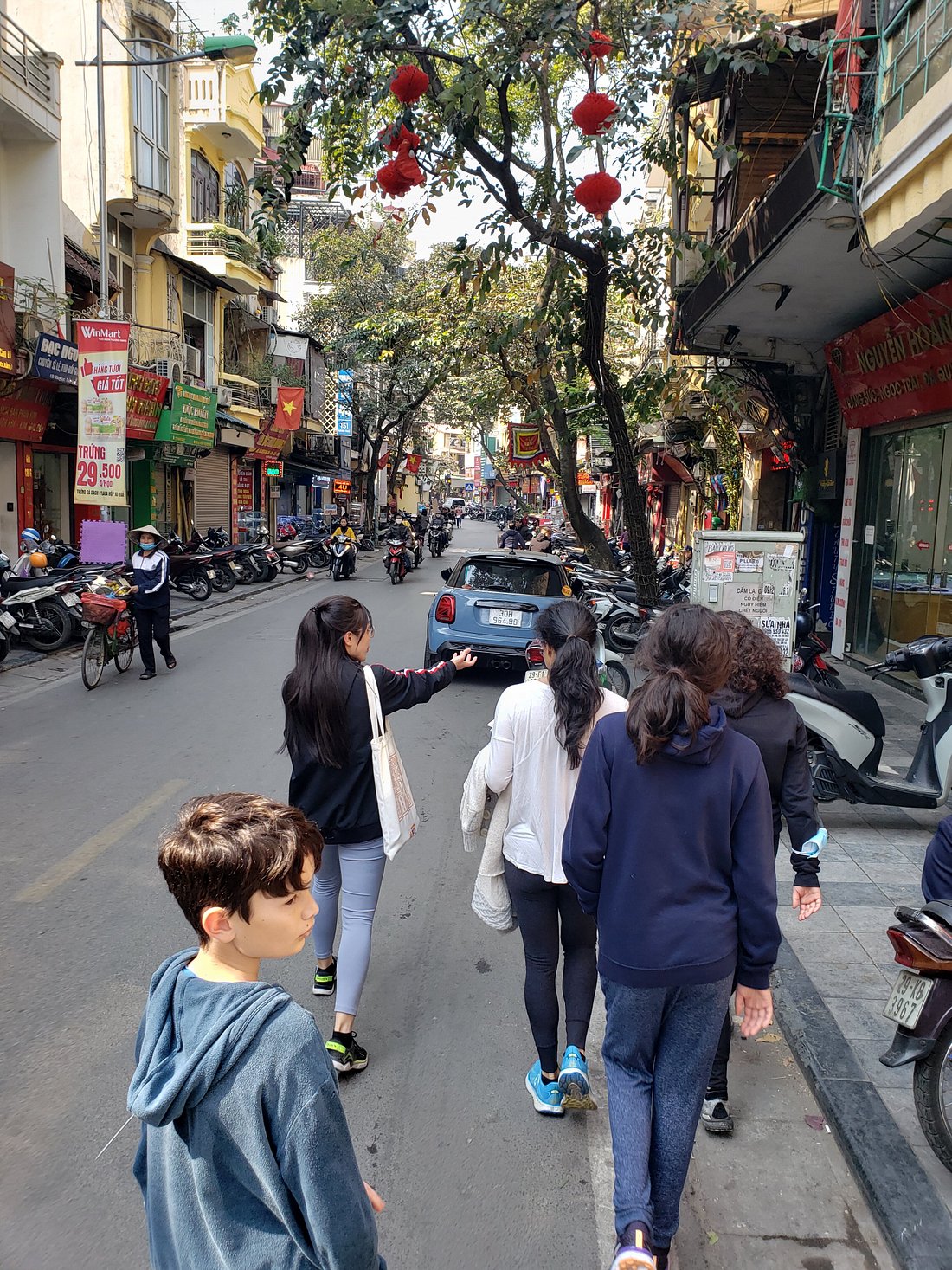
One of the best ways to explore Hanoi is to join a walking tour with a local guide. You can learn about the history, culture, and lifestyle of the city, while enjoying the sights, sounds, and smells of the streets. You can also make some new friends and have a lot of fun along the way.
There are many walking tours available in Hanoi, covering different areas and themes. You can choose the one that suits your interests and schedule, like booking individual day tours or combining them in your private Vietnam packages. Some of the most popular tours are:
- Old Quarter Tour: This tour takes you to the heart of Hanoi, where you can see the ancient architecture, the bustling markets, the street food stalls, and the hidden gems of the city. You can also visit some of the famous landmarks, such as the Hoan Kiem Lake, the Dong Xuan Market, the Bach Ma Temple, and the St. Joseph's Cathedral.
- French Quarter Tour: This tour shows you the contrast between the old and the new, the traditional and the modern, the east and the west. You can admire the elegant buildings, the wide boulevards, the green parks, and the chic cafes of the French colonial era. You can also see some of the cultural and political icons, such as the Opera House, the National Museum of History, the Hoa Lo Prison, and the Presidential Palace.
- Temple of Literature Tour: This tour takes you to the oldest university in Vietnam, where you can learn about the history of education, literature, and philosophy in the country. You can see the beautiful gardens, the ancient pavilions, the stone steles, and the statues of Confucius and his disciples. You can also witness the graduation ceremony of the students, and participate in some traditional games and activities.
- Street Food Tour: This tour lets you taste the delicious and diverse cuisine of Hanoi, from the famous pho and bun cha, to the exotic snails and frogs. You can also learn about the ingredients, the recipes, and the stories behind each dish. You can also discover some of the best places to eat, drink, and hang out in the city.
Hanoi Free Walking Tours are a great way to experience the authentic and vibrant side of Hanoi. So don't miss the chance to join a free walking tour when you're in Hanoi.
Learn About the Hoa Lo Prison Museum
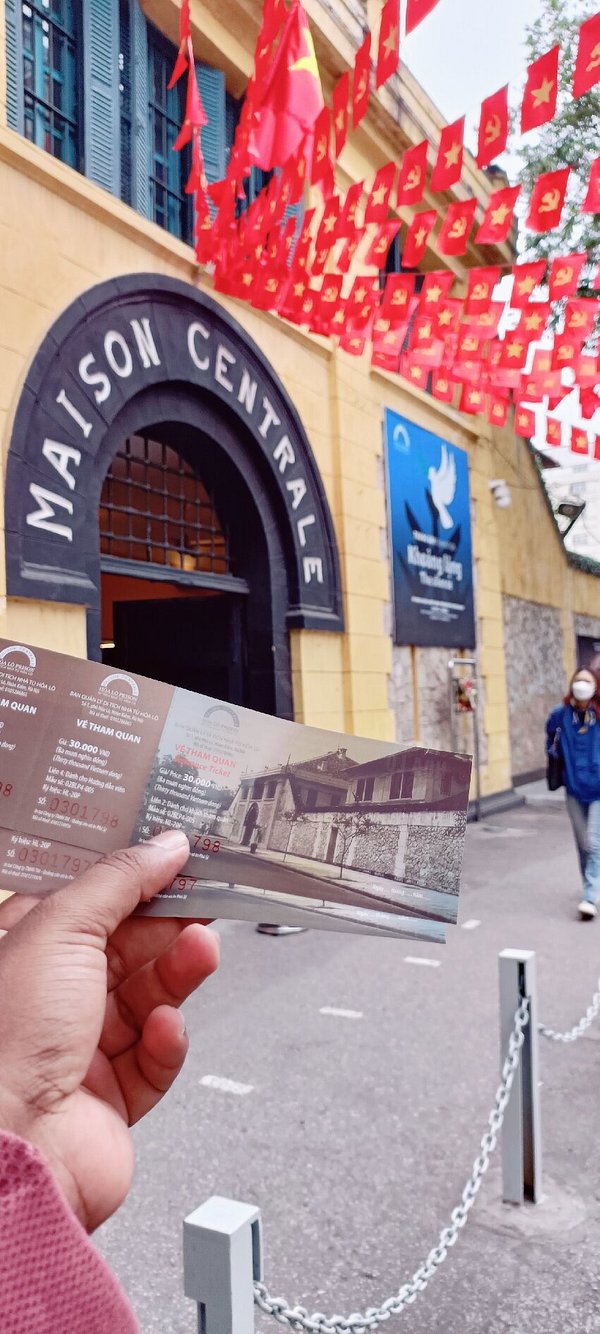
If you're looking for a sobering and eye-opening experience in Hanoi, you should visit the Hoa Lo Prison Museum, also known as the Hanoi Hilton. This museum was once a prison used by the French colonists to detain and torture Vietnamese revolutionaries, and later by the North Vietnamese to hold American prisoners of war during the Vietnam War. You can see the original cells, the guillotine, the shackles, and the propaganda materials that tell the stories of the inmates and their struggles. You can also learn about the famous escape attempts, the daring rescues, and the heroic acts of the prisoners and their supporters.
The Hoa Lo Prison Museum is not for the faint-hearted, as it shows the harsh realities of war and oppression. You'll see the graphic photos, the gruesome exhibits, and the personal belongings of the prisoners. You'll also hear the testimonies, the songs, and the voices of the survivors and the victims. You'll feel the emotions, the pain, and the hope of the people who lived and died in this place.
The Hoa Lo Prison Museum is a place of history, memory, and reflection. It's a place where you can appreciate the sacrifices, the courage, and the resilience of the Vietnamese people. It's a place where you can understand the complexity, the tragedy, and the legacy of the Vietnam War. It's a place where you can find inspiration, compassion, and peace.
Hanoi Opera House
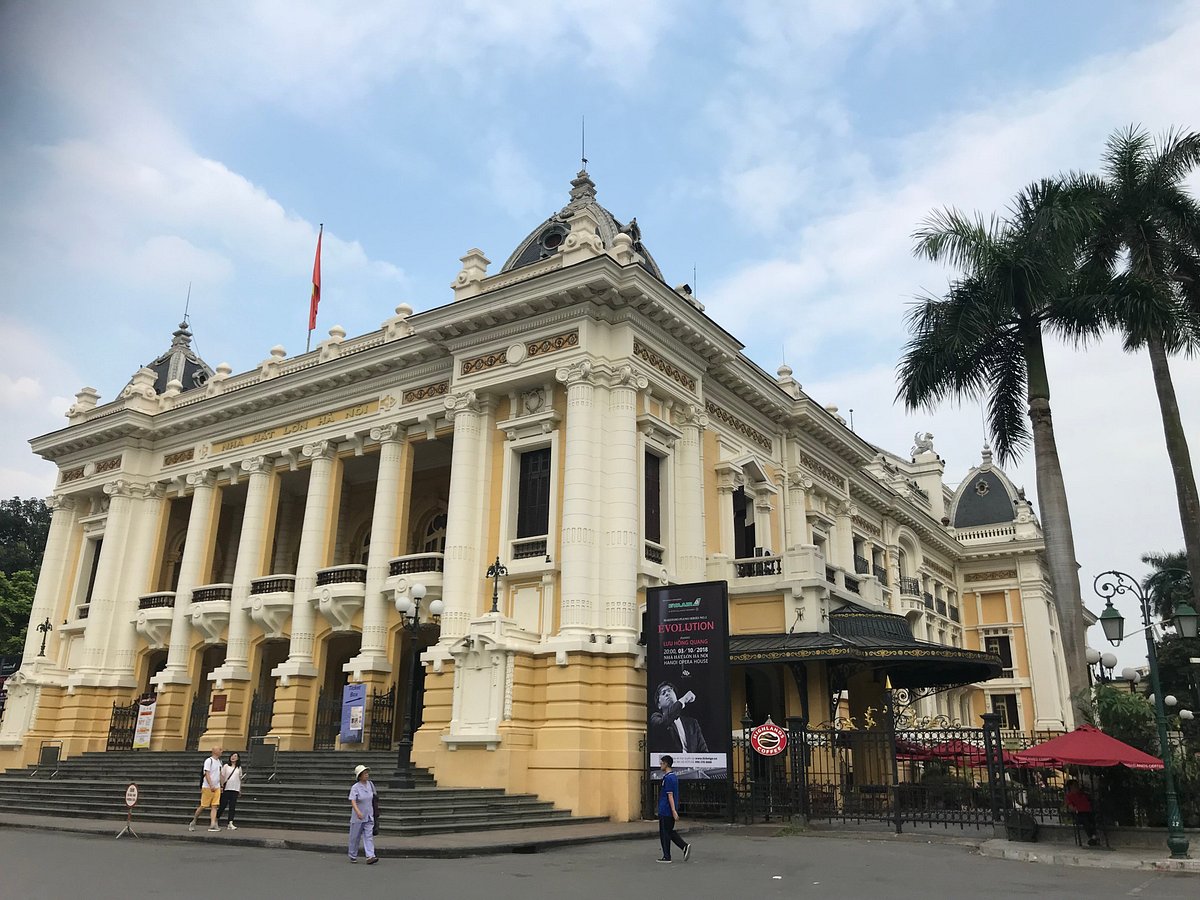
If you're a fan of music, theatre, or architecture, you can't miss the Hanoi Opera House, one of the most stunning and historic buildings in the city. Built in 1911 by the French, the Hanoi Opera House is a masterpiece of neo-classical design, with a grand facade, a majestic dome, and a lavish interior. You can admire the elegant details, the ornate decorations, and the impressive acoustics of the hall.
But the Hanoi Opera House is more than just a beautiful structure. It's also a symbol of the cultural and political life of Vietnam. Over the years, the Hanoi Opera House has hosted many famous performances, from classical operas and ballets, to modern dramas and musicals.
You can experience the Hanoi Opera House in different ways. You can book a ticket to watch a show, ranging from traditional Vietnamese arts, to international productions. You can also join a guided tour to learn more about the history and architecture of the building. Or you can simply walk around the building and enjoy the atmosphere of the place, especially at night when it's lit up with colourful lights.
The Hanoi Opera House is a must-see attraction in Hanoi, as it offers a glimpse into the past and present of the city. It's a place where you can be entertained, inspired, and moved.
See a Water Puppet Show
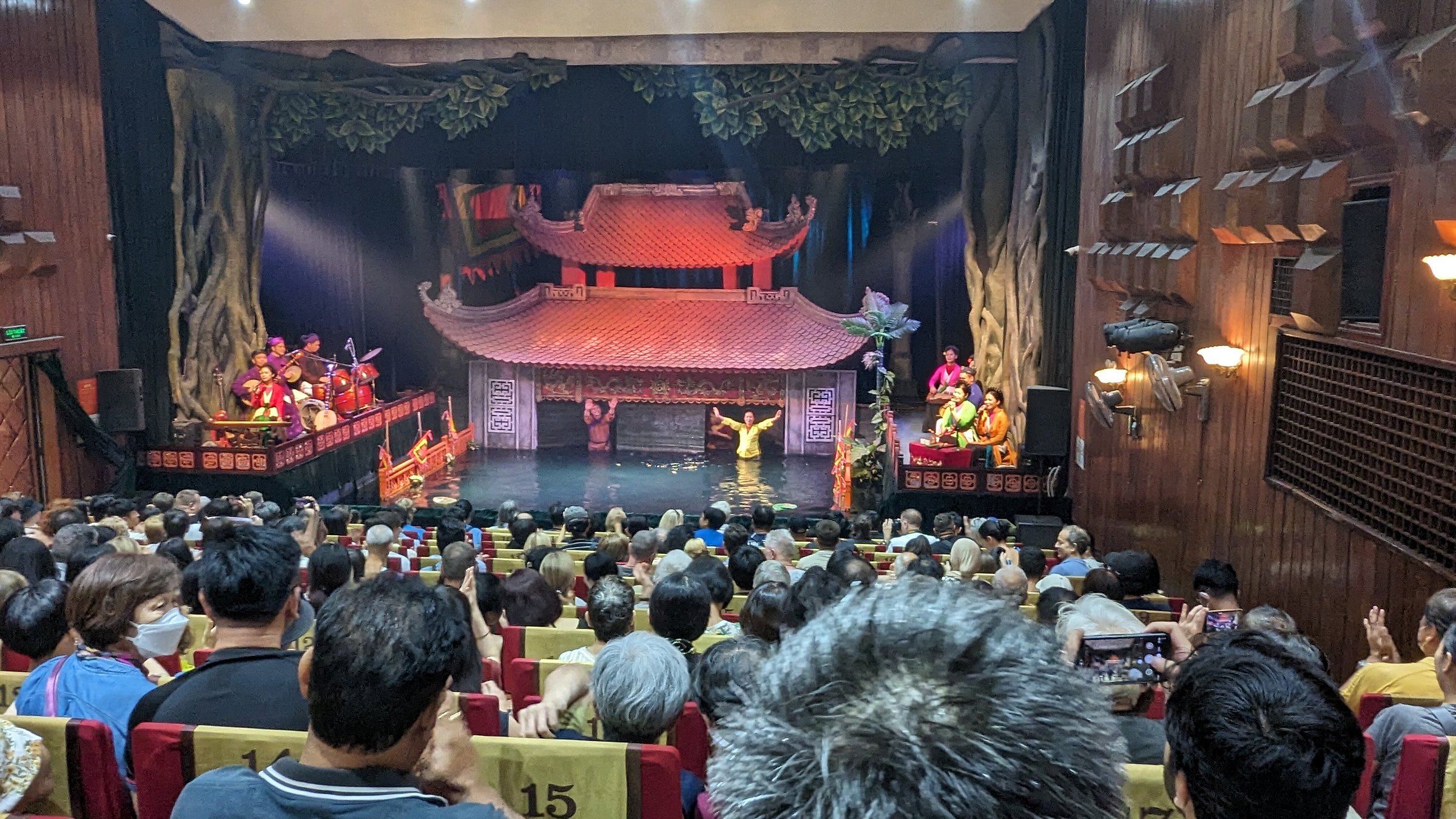
One of the most unique and entertaining things to do in Hanoi is to see a water puppet show, a traditional art form that dates back to the 11th century. Water puppetry is a special kind of puppetry that uses a large pool of water as the stage, and wooden puppets that are controlled by hidden puppeteers behind the scence. The puppets perform stories and scenes from Vietnamese folklore, history, and culture, accompanied by live music and singing. You can watch the puppets dance, swim, fight, and play on the water, creating a magical and lively spectacle.
A water puppet show is a great way to experience the rich and diverse heritage of Vietnam, as well as to enjoy some humour and fun. The shows are suitable for all ages, and you can find them in several theatres around the city, such as the Thang Long Water Puppet Theatre, the Lotus Water Puppet Theatre, and the Vietnam National Puppetry Theatre. The shows usually last for about an hour, and you can buy tickets in advance or at the door. The prices are very affordable, ranging from 100,000 to 200,000 VND (about 4 to 8 USD) per person.
A water puppet show is a must-see attraction in Hanoi, as it offers a glimpse into the ancient and creative spirit of the Vietnamese people. It's a place where you can laugh, learn, and marvel at the skill and artistry of the puppeteers and the musicians. It's a place where you can immerse yourself in the colourful and charming world of water puppetry.
Visit Bat Trang Pottery Village
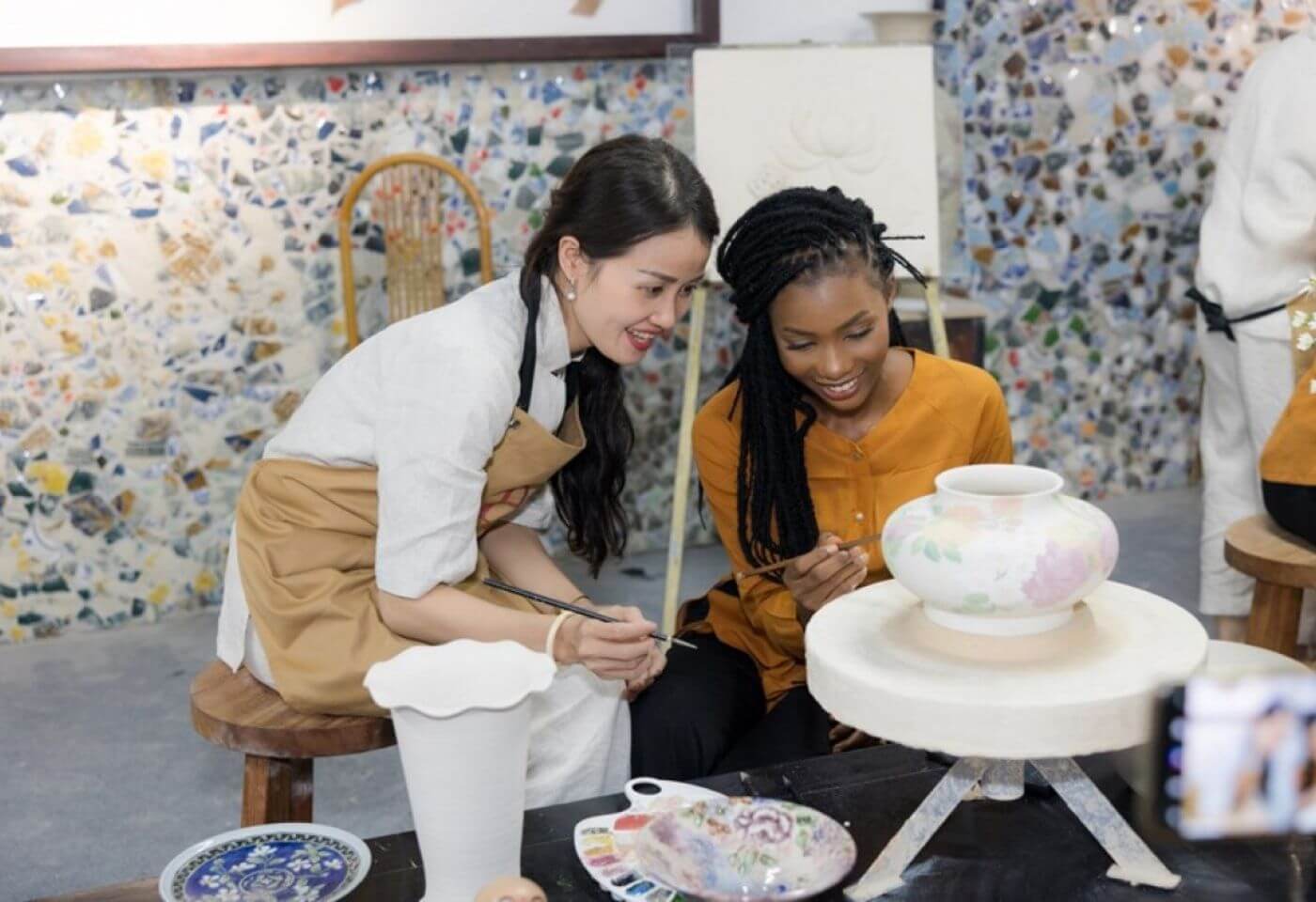
If you're looking for a fun and creative activity in Hanoi, you should visit Bat Trang Pottery Village, a famous destination for pottery lovers.
Bat Trang Pottery Village is a small village on the outskirts of Hanoi, where you can see the traditional craft of making pottery and ceramics. You can explore the village and admire the various products, from bowls and plates, to vases and statues. You can also learn about the history and culture of the village, which has been producing pottery for over 1,000 years.
But the best part of visiting Bat Trang Pottery Village is that you can make your own pottery. You can join a workshop and learn from the local artisans how to shape, decorate, and fire your own piece of pottery. You can choose from different styles, colours, and patterns, and unleash your inner artist.
You can also buy some souvenirs or gifts from the shops and markets in the village. A visit to Bat Trang Pottery Village is a great way to experience the authentic and artistic side of Hanoi, as well as to have some fun and relaxation. It's a place where you can enjoy the beauty, the skill, and the tradition of pottery making.
You can also express yourself, create something unique, and take home a memorable souvenir.
Vietnamese Egg Coffee
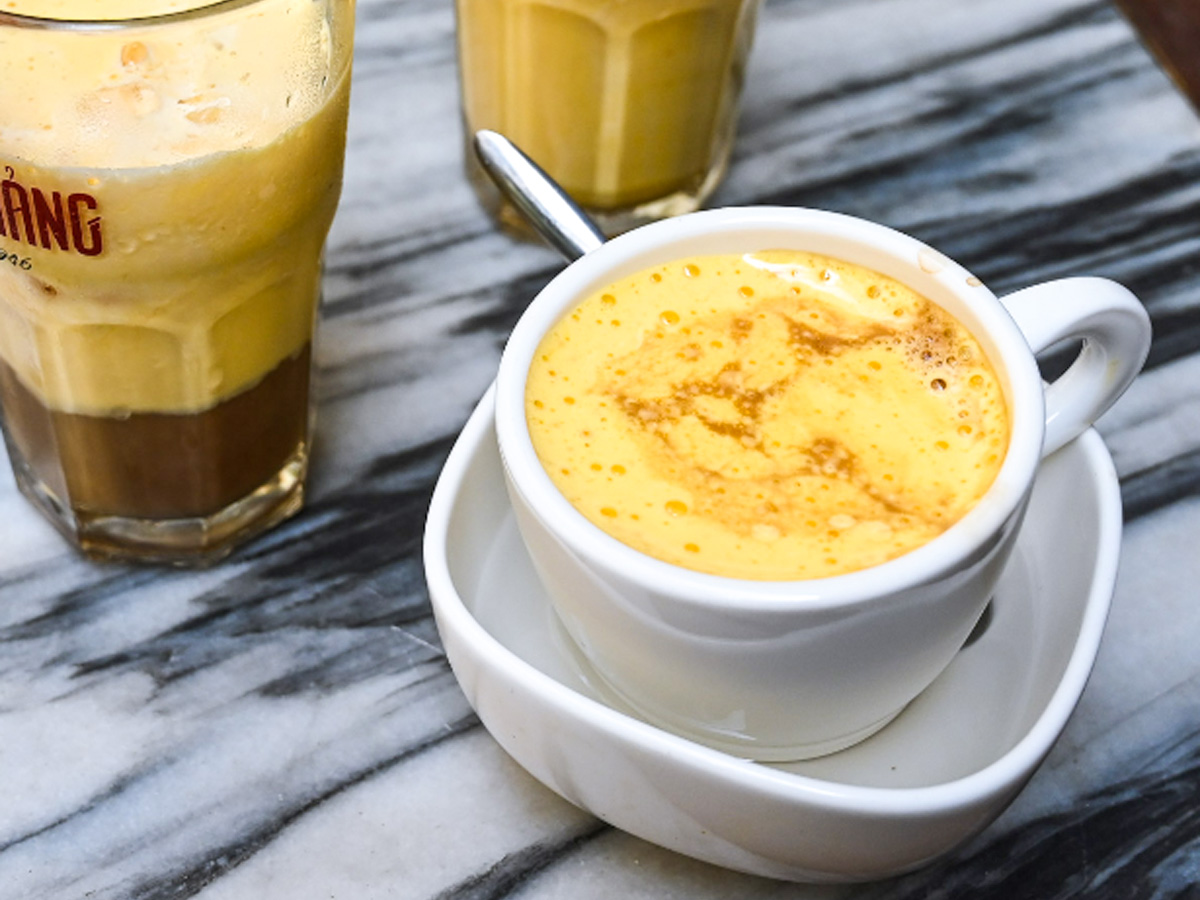
If you're a coffee lover, you can't miss the chance to try Vietnamese egg coffee, a delicious and unique drink that will surprise your taste buds. Vietnamese egg coffee, or "cà phê trứng", is a traditional beverage that consists of a creamy egg yolk mixture on top of a strong black coffee. The egg yolk is whipped with condensed milk and sugar, creating a rich and smooth layer that contrasts with the bitter and aromatic coffee. The result is a heavenly combination of flavours and textures that will make you want more.
You can find Vietnamese egg coffee in many cafes and street stalls in Hanoi, but the best place to try it is at Giang Cafe, the original inventor of the drink. Giang Cafe is a cozy and charming spot that has been serving egg coffee since 1946, when the owner, Nguyen Giang, came up with the idea of using egg yolk as a substitute for milk, which was scarce at the time. Since then, the cafe has become a popular destination for locals and tourists alike, who come to enjoy the signature drink and the friendly atmosphere.
To enjoy Vietnamese egg coffee, you should stir the egg yolk and coffee together, and sip it slowly with a spoon. You can also order it hot or cold, depending on your preference. Either way, you will be amazed by the flavour and texture of this drink, which is like a dessert and a coffee in one. Vietnamese egg coffee is a must-try attraction in Hanoi, as it offers a glimpse into the culture and creativity of the Vietnamese people. It's a place where you can indulge yourself, satisfy your curiosity, and discover a new way of enjoying coffee.
Vietnamese Women's Museum
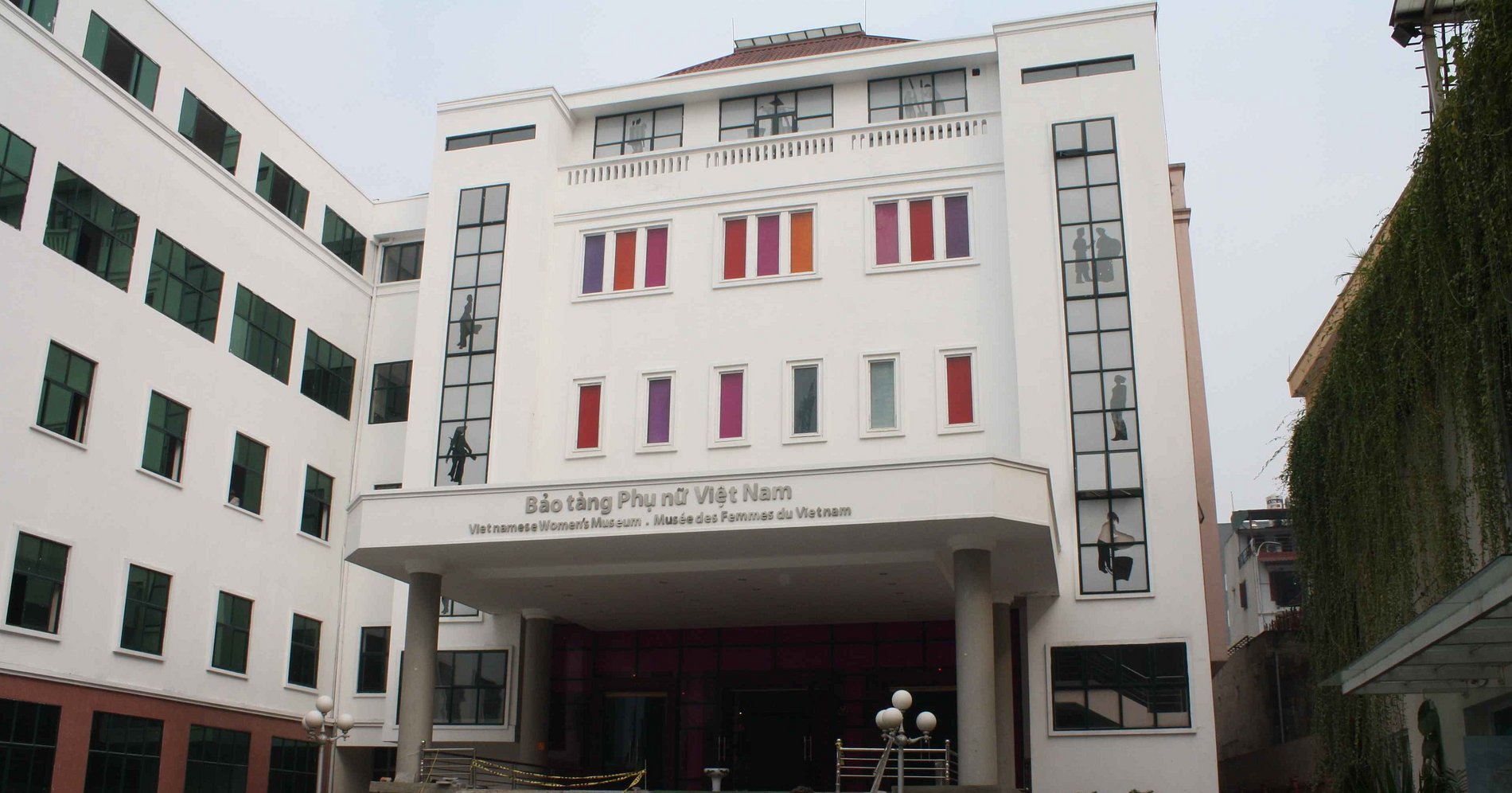
If you want to learn more about the lives, roles, and achievements of Vietnamese women throughout history and across different ethnic groups, then you should visit the Vietnamese Women's Museum in Hanoi. This museum is not only a place to display artifacts and documents, but also a place to celebrate and honor the contributions of women in Vietnamese society.
The museum is located on Ly Thuong Kiet Street, near the central Hoan Kiem Lake and the old quarter. It has four floors, each with a different theme and exhibition.
The first floor is the lobby, where you can find the souvenir shop, the café, and the information desk. The second floor is dedicated to the theme of "Women in Family", where you can see how women take care of their families, practice their traditions, and express their creativity.
The third floor is about the theme of "Women in History", where you can discover how women participated in the struggles for national independence and social justice. The fourth floor is about the theme of "Women's Fashion", where you can admire the diversity and beauty of the costumes and accessories of women from different regions and ethnic groups.
The museum has a rich and varied collection of over 25,000 items, including photographs, videos, audio recordings, textiles, ceramics, jewelry, and more. The museum also features interactive displays, multimedia presentations, and guided tours, which make the visit more engaging and informative. The museum also hosts various events and activities, such as workshops, seminars, festivals, and exhibitions, which showcase the culture and the talents of Vietnamese women.
The museum is a great place to visit for anyone who is interested in the culture, history, and identity of Vietnam. The museum will give you a deeper and broader understanding of the roles and values of Vietnamese women, and how they have shaped and influenced the nation's development.
The museum will also inspire you with the stories and achievements of Vietnamese women, who have overcome many challenges and difficulties, and have made remarkable contributions in various fields and sectors. The museum will also impress you with the diversity and beauty of Vietnamese women, who have their own unique characteristics and styles.
With the desire to bring the museum closer to the public, the Vietnam Women's Museum has undertaken numerous activities, as well as educational programs, and opened the Discovery Room in 2010 to cater to educational activities for children aged 7 to 15. The Discovery Room provides children with opportunities to develop creative, research, exchange, presentation, reading, and writing skills through various activities. Students can learn to make traditional hats and try on the traditional costumes of Vietnam's ethnic groups.
The Vietnamese Women's Museum is a must-see attraction for anyone who visits Hanoi. It is a place where you can appreciate the strength, the wisdom, and the grace of Vietnamese women, and feel the pride and the respect for their heritage and legacy.
The Hanoi Night Market
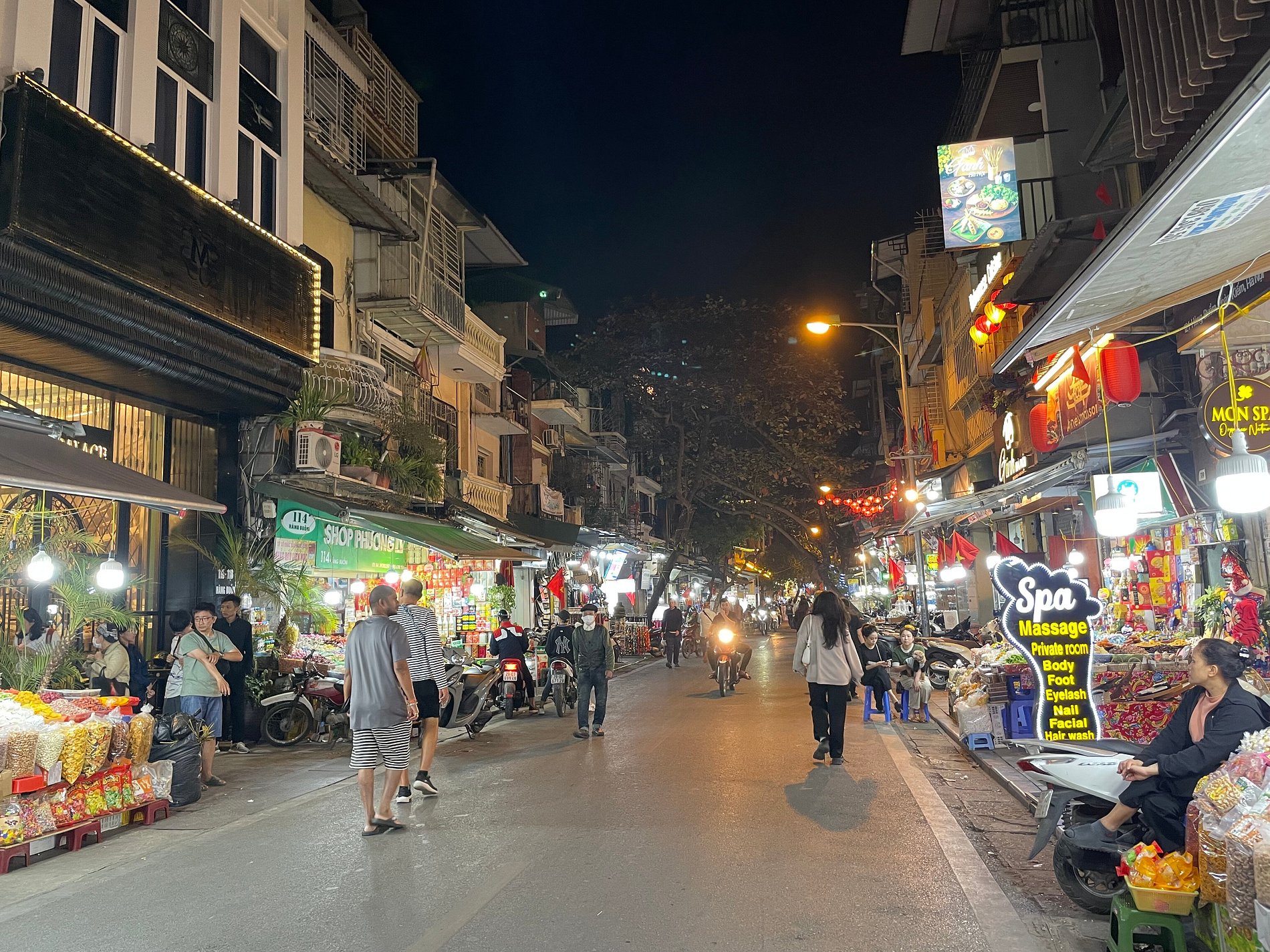
If you're looking for a lively and exciting experience in Hanoi, you should visit the Hanoi Night Market, a bustling and colourful event that takes place every weekend from 6 pm to midnight. The Hanoi Night Market is a great place to shop, eat, and enjoy the local culture. You can find a variety of goods, from clothes and accessories, to souvenirs and handicrafts, at bargain prices. You can also sample some of the delicious street food, such as pho, banh mi, and bun cha, and watch the street performers, such as singers, dancers, and magicians.
The Hanoi Night Market is not only a shopping destination, but also a social and cultural hub, where you can meet and chat with the friendly and hospitable locals, and learn more about their traditions and customs. You can also join the crowd and play some games, such as bingo, chess, and cards, or just relax and enjoy the atmosphere.
The Hanoi Night Market is a must-see attraction in Hanoi, as it offers a glimpse into the vibrant and dynamic spirit of the city. It's a place where you can have fun, explore, and discover the hidden gems of Hanoi. It's a place where you can immerse yourself in the sights, sounds, and smells of the night market.
Where to Stay in Hanoi?
Looking for the perfect pad in Hanoi? Well, you're in for a treat because this city is bursting with accommodation options that cater to every taste and budget. Whether you're a luxury seeker or a budget-conscious traveler, Hanoi's got you covered.
Luxury Retreats
For those who like a touch of opulence, Hanoi boasts some swanky hotels that redefine luxury. The Sofitel Legend Metropole Hanoi, with its colonial charm and world-class amenities, stands as a testament to timeless elegance. Alternatively, the JW Marriott Hotel Hanoi or Hotel de l'Opera Hanoi - MGallery promises a plush experience with its modern design and impeccable service.
Boutique Beauties
If you fancy a more intimate stay, Hanoi's boutique hotels are a treasure trove. Consider La Siesta Trendy, an art-inspired haven in the heart of the Old Quarter, blending comfort with cultural flair. Another gem is La Sinfonia Del Rey, where personalized service and stylish interiors create an unforgettable boutique experience.
Budget Bunking
Traveling on a shoestring? Fear not! Hanoi offers a myriad of budget-friendly accommodations without compromising on comfort. The Old Quarter is a hotspot for affordable hostels like Hanoi Rocks Hostel, where you can snag a cozy bed without breaking the bank. Additionally, you'll find countless guesthouses sprinkled across the city, providing a local touch at pocket-friendly prices.
Accommodations near Hanoi for a Local Touch
For a more immersive experience, why not opt for a homestay? Hanoi's outskirts are dotted with charming homestays, allowing you to soak in the local culture. The serene surroundings of Mai Chau Eco Lodge or the rustic charm of Tam Coc Family Homestay offer a genuine taste of Vietnamese hospitality.
In conclusion, Hanoi's accommodation scene is as diverse as the city itself. Whatever your preference or budget, you're sure to find the perfect spot to call home during your stay in this vibrant Vietnamese capital.
How to Get Around Hanoi?
Hanoi is a vibrant and bustling city that offers plenty of attractions, restaurants, shops, and hotels for visitors to enjoy. But how do you get around this city of over eight million people and countless motorbikes? Luckily, there are many options for getting around Hanoi, depending on your budget, preference, and destination. Here are some of the most common and convenient ways of exploring Hanoi:
- Motorbike taxis: If you want to experience the thrill and the chaos of Hanoi's traffic, you can hop on a motorbike taxi, or "xe om" in Vietnamese. These are drivers who offer rides on their motorbikes for a negotiated price. You can find them on almost every street corner, or you can use an app like Grab to book one. Motorbike taxis are fast, cheap, and flexible, but they are also risky and uncomfortable. Make sure you wear a helmet, agree on the fare before you get on, and hold on tight.
- Buses: If you want to save money and travel like a local, you can take a bus to get around Hanoi. The city has a network of over 100 bus routes that cover most of the main areas and attractions. Buses are frequent, reliable, and air-conditioned, but they can also be crowded, slow, and confusing. You can buy a ticket on board for about 7,000 VND, or use a bus card for cheaper fares. You can also use an app like Tim Buyt to find the nearest bus stop, route, and schedule.
- Grabs: If you want to have more comfort and convenience, you can use a Grab to get around Hanoi. Grab is a popular app that allows you to book a car or a motorbike taxi with a few taps on your phone. You can see the driver's name, photo, rating, and vehicle number, and you can pay by cash or card. Grab is safe, easy, and affordable, but it can also be hard to find a driver during peak hours.
- Private cars: If you want to have the ultimate luxury and privacy, you can hire a private car with a driver to get around Hanoi. This is the best option for families, groups, or people who want to avoid the hassle and stress of navigating the city. You can book a private car through your hotel, a travel agency, or an online platform. You can choose the type, size, and quality of the car, and you can customize your itinerary and schedule. Private cars are expensive, but they are also comfortable, flexible, and safe.
- Bicycle: If you want to have some fun and exercise, you can rent a bicycle to get around Hanoi. This is a great way to see the city at your own pace, and to explore some of the hidden gems and back alleys. You can rent a bicycle from your hotel, a bike shop, or an online platform for about 100,000 VND per day. You can also join a guided bike tour, which will take you to some of the most interesting and scenic places in Hanoi. Bicycle is eco-friendly, healthy, and enjoyable, but it can also be dangerous and exhausting. You have to be careful of the traffic, the weather, and the road conditions.
- Cyclo: If you want to have a unique and nostalgic experience, you can take a cyclo to get around Hanoi. A cyclo is a three-wheeled bicycle with a passenger seat in front, and a driver behind. It is a traditional and iconic mode of transport in Hanoi, and it is often used by tourists to see the sights of the old quarter. You can find a cyclo on the streets, or you can book one through your hotel or a travel agency. You can negotiate the price, the duration, and the route with the driver. Cyclo is charming, relaxing, and romantic, but it can also be slow, noisy, and bumpy.
Last updated on 2024-01-23 01:38:23.
Other Travel Planning
- Things not to do when traveling
- Vietnam Tour Packages from Singapore
- Reasons To Visit Vietnam In The Green Season
- Hanoi Travel Guide: Everything You Need to Know Before You Go
- Best Time to Visit Vietnam and Cambodia: A Complete Guide for 2024
- Vietnam: the value of traveling
- Most beautiful waterfalls in Vietnam
- The Best Vietnam Travel Agency
- Why you should return to Vietnam
- Uncover Vietnam's Beauty: A Comprehensive Guide to Points of Interest

